
August 16, 2004
Carlos de Luna Saenz is a 32 years old OS/2 user since he discovered it, on 1992 with OS/2 2.1. He wrote "Building the infrastructure for the internet" for IBM on 1996 and has developed several projects for OS/2 (especially intranets) since then. He also knows that being an OS/2 user in todays world is to be more productive than others, even when the people is not always willing to try, specially for the lack of applications with NLS, but he is convinced that the users can change that also.
If you have a comment about the content of this article, please feel free to vent in the OS/2 e-Zine discussion forums.
There is also a Printer Friendly version of this page.
|
Previous Article |
|
Next Article |

ISP or ASP Made Easy (Part I)
Some people should know that I have been a lot of
things and comparing a lot of software in order to
create an ISP/ASP site, but, What is an ISP or an ASP?
ISP stands for Internet Server Provider, in my case I will not provide the access to the Internet but I could setup a PPP Server such as Injoy to do it. However, I will instead host "cheap" hosting for pages and domains, in this case I will be doing just partial ISP services. Why? because the great competitors like Prodigy, esmas.com or others in Mexico have a lot more money than I do and infrastructure that a mere mortal can't have.
ASP stands not for Active Server Pages like in the Microsoft subculture, but for Application Server Provider. What is that?
Well the main idea is to create an application that can be used for a lot of eneterprises or people and charge a small amount of money for the rent of the application.
Well, my approach is to be more an ASP than an ISP, in order to reach that goal I decided to go with eComStation as a server, so the first part was to setup my eCS machine and the second part was to provide them a broadband Internet conection.
Setting up the Internet connection
Well, I was afraid to have the service and have an incompatible OS, but guess what I did installed eCoNet and Internet Assistant (both supplied on eCS) and followed this steps:
- Take out the ADSL modem out of the box and installed to the ethernet port and the telephone line using ADSL filters provided with the modem (that was the most dificult part of it)
- Installed my SiS 9000 onboard Ethernet card drivers. The drivers where supplied with the board, but they are also on Internet. To install, just use the old MPTS program.
- I ran the Internet Assistant and create a new
conection for the ADSL protocol
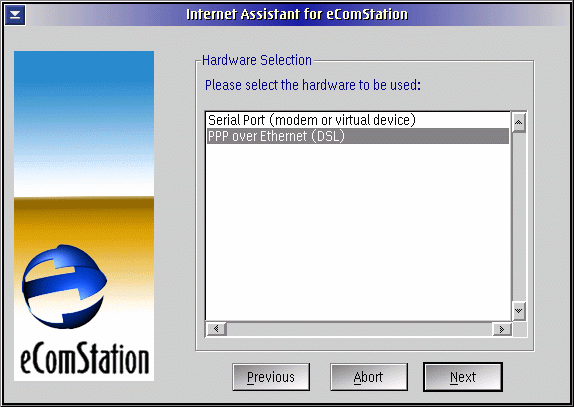
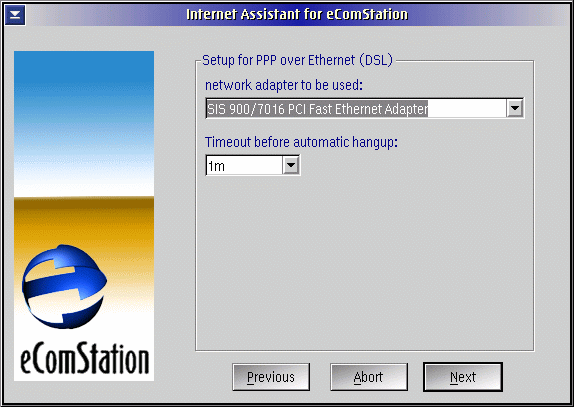
I chose all the default values and I put any telephone number, Internet Assistant specifies that the phone will be not used but it is necessary to enter it. You will need the DNS (numeric) address of your ISP.
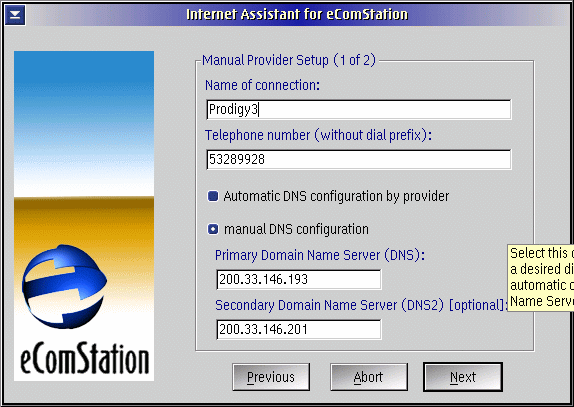
You must be carefull with the IP Forwarding options in order to let the Internet machines to reach yours. Disable them if you have no more machines in your site.
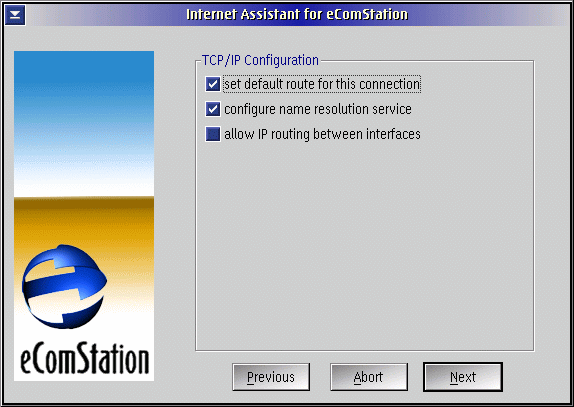
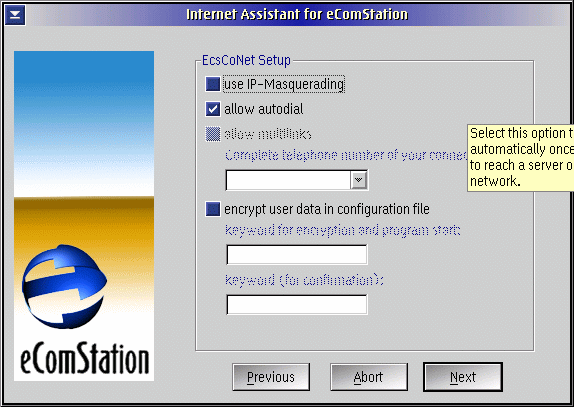
- After following everything in the smart-guide I rebooted and
I had my broadband system up and running.
I was able to navigate the internet via an ADSL modem
with a dynamic IP address.

In the following article we
will see how to setup the web server and the DNS resolution.
|
Previous Article |
|
Next Article |